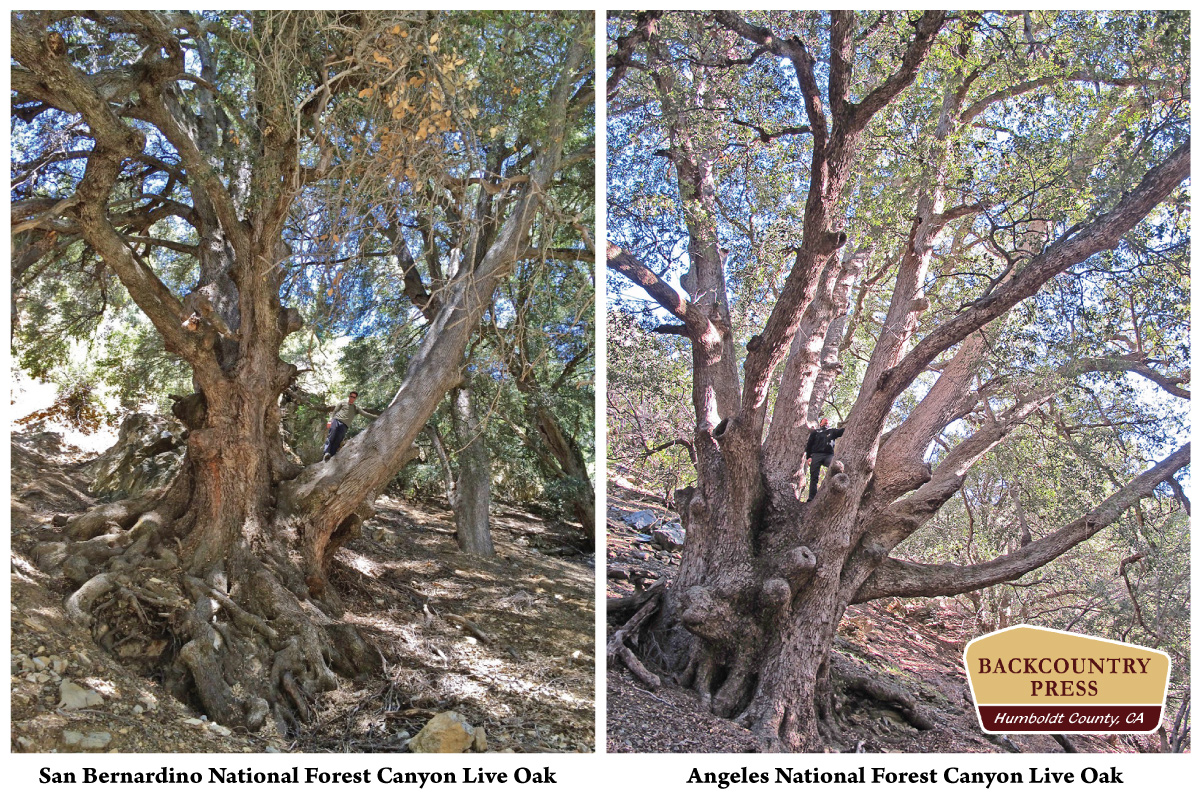The Transverse Ranges hold some of the largest oaks in North America
I fell in love with this Canyon Live Oak (Quercus chrysolepis) in 2002 while training to prepare myself to hike the Continental Divide Trail. One fateful night I inadvertently camped near it along a stream called Prairie Gulch. The tree has lived in my dreams ever since. In November 2015, the opportunity to return, revisit and measure the oak was offered while doing a botany project in the San Gabriel Mountains National Monument.

While I’ve never called myself a Big Tree Hunter, I thoroughly enjoy finding beautiful specimens—where individuals or groves of trees make me slow down and ponder the natural world. There are certain locations where forests hold more prodigious specimens—often fantastically larger than in similar vegetation types elsewhere. Because forests are dynamic systems it is impossible to pinpoint any single factor that may lead to this gigantism. Most likely, a combination of synergistic circumstances come together in these primordial places—including good luck.
Some of these ideal factors include, but are not limited to, optimal light, elevation, aspect, soil conditions, access to water, genetics, healthy competition from others and—as mentioned—luck in the long-term. The luck is the interesting factor because other bad-luck factors that could lead to the toppling of giants include fire, wind storms, and logging—these hide-outs must have been fortunate enough to have avoided the ax.

The Canyon Oaks of southern California might now be reaching legendary status. The current record holder is also in the Transverse Ranges, just to the east of the San Gabriel Mountains, in the San Bernardino Mountains. I have not seen that tree, but the habitat and growth look very similar to the San Gabriel Oak. The San Gabriel Oak grows at the junction of three feeder streams, at the point where the East Fork of the San Gabriel River actually forms. On a south-facing bench above the convergence of these washes, the tree has found a home for over 1,000 years. During that time it has witnessed the transition from Serrano Indian summer and fall camps as its base, to the gold prospectors of the early 1900’s sitting in its shade, to the occasional Sheep Mountain Wilderness backpacker today. What stories it must have to tell…
What follows is a collection of images and measurements of this special being.


|
San Bernardino Oak
|
San Gabriel Oak
|
|
|
Circumference
|
499 inches
|
333 inches
|
|
Height
|
97 feet
|
93 feet
|
|
Crown spread
|
98 feet
|
92 feet
|



Resources:
- California Big Tree Register
- Los Angeles Times: Oak tree in San Bernardino Mountains is nation’s largest
- Big Trees of the Klamath Mountains
- Measurement Guidelines (should be based on total volume!)
Great Post! I especially like the detailed measurements. I know of similar sized beauty where Kelsey Creek flows into the Scott River just down the road from our cabin. Next time I visit it I will get a photo to send to you.
Thanks Matthew- Send me some pictures of this oak from the Klamath!
Cheers, Michael